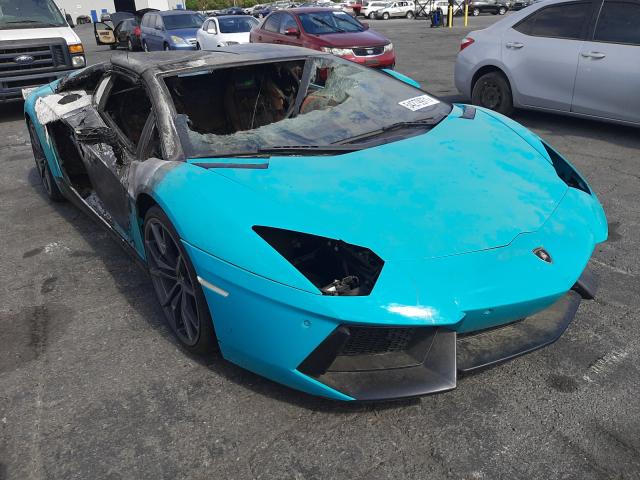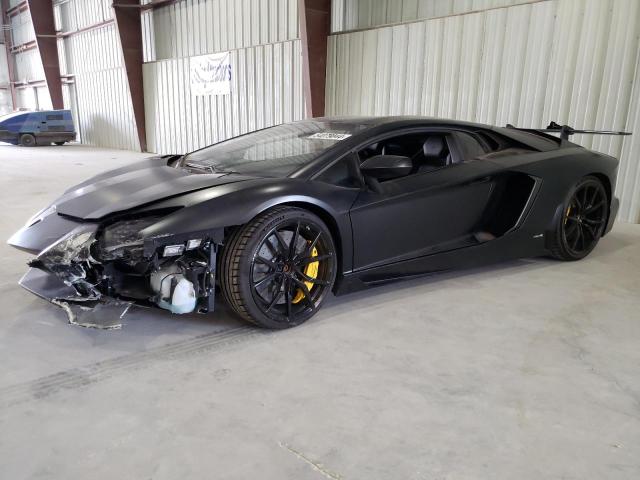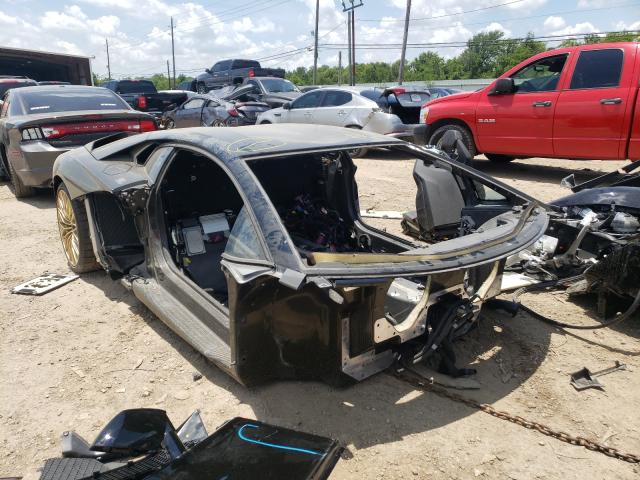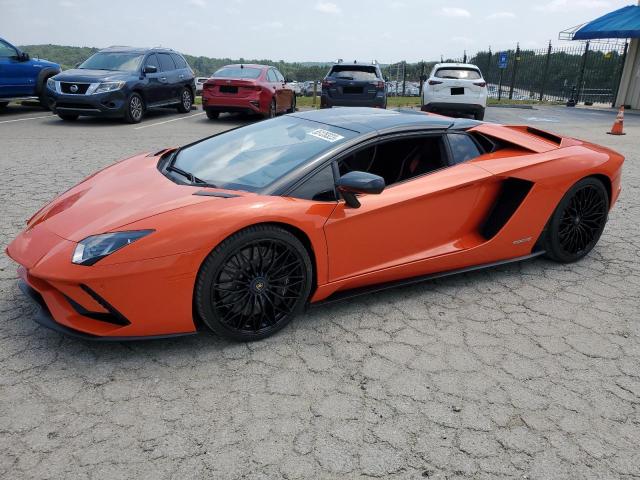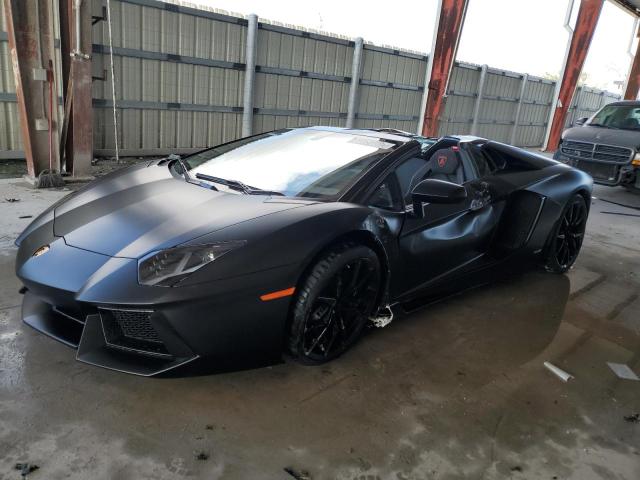2012 LAMBORGHINI AVENTADOR | ZHWUC1ZD2CLA01085
Lot details
- Sale Date2025-06-09
- Lot Number41274304
- ACV277414 $
- Sale documentSalvage (New York)
- LocationDream Rides (IL)
- Odometer11,058 miles (17,796 km)
- Primary DamageUNDERCARRIAGE
- SellerState Farm Group Insurance
Vehicle details
- Make
- Model
- Year2012
- FuelGasoline
- Engine6.5L V-12 DOHC, VVT, 691HP
- TransmissionsAutomatic
- Drive TypeAll-Wheel Drive
Vehicle specifications
6
~$500,000
Engine: 6.5L naturally aspirated V12 petrol
Torque: 720 Nm
0–100 km/h: ~2.8 s
The Aventador's 6.5-liter naturally aspirated V12 engine delivers exhilarating performance, producing up to 780 horsepower and 720 Nm of torque in the Ultimae variant. This power enables the supercar to accelerate from 0 to 100 km/h in just 2.8 seconds, with a top speed exceeding 350 km/h. The engine's high-revving nature and immediate throttle response provide an engaging and visceral driving experience.
Handling is enhanced by a carbon-fiber monocoque chassis, pushrod suspension, and advanced aerodynamics, including the Aerodinamica Lamborghini Attiva (ALA) system in the SVJ model. These features contribute to precise steering, high-speed stability, and exceptional cornering capabilities. The all-wheel-drive system ensures optimal traction, allowing the Aventador to perform confidently on various road conditions.
As Lamborghini's flagship model, the Aventador embodies the brand's commitment to performance, design, and innovation. Its aggressive styling, scissor doors, and thunderous V12 soundtrack make it a standout in the supercar segment, appealing to enthusiasts seeking a combination of speed, exclusivity, and Italian craftsmanship.
Final Bid Lamborghini Aventador (2012)
$155,500
$155,500
$155,500
Body Styles
The Lamborghini Aventador is a two-door, two-seater supercar available in both coupe and roadster configurations. Its low-slung profile, sharp lines, and aerodynamic design elements contribute to its striking appearance and performance-oriented stance. The roadster variant features a removable roof panel, allowing for an open-air driving experience without compromising structural rigidity. The Aventador's dimensions and proportions are optimized for high-speed stability and agility, making it a formidable presence on both road and track.
Model Name Meaning (Manufacturer)
The name "Aventador" is derived from a Spanish fighting bull that gained fame for its courage in the arena in 1993. Lamborghini's tradition of naming its vehicles after renowned bulls reflects the brand's association with power, aggression, and a fearless spirit, qualities embodied by the Aventador supercar.
Model Name Meaning (Languages)
"Aventador" is a Spanish term associated with bullfighting, specifically referring to a bull that has demonstrated exceptional bravery. The name evokes images of strength, dominance, and a commanding presence, aligning with the supercar's performance capabilities and bold design language.
Body & Interior Colors and Rims
The Aventador's exterior color palette includes a wide range of vibrant and sophisticated hues, such as Arancio Atlas (orange), Giallo Orion (yellow), Verde Mantis (green), Blu Cepheus (blue), and Rosso Mars (red). Special finishes like matte, metallic, and pearl effects enhance the vehicle's visual impact, allowing owners to personalize their supercar to their preferences.
Inside, the cabin offers a blend of luxury and sportiness, featuring premium materials like leather, Alcantara, and carbon fiber. Color combinations such as Nero Ade (black), Rosso Alala (red), and Bianco Polar (white) are available, with contrast stitching and customizable trim options adding to the bespoke feel. The driver-focused cockpit integrates advanced technology with ergonomic design, ensuring both comfort and control.
Wheel options for the Aventador range from 19 to 21 inches, with designs including multi-spoke alloys and center-locking forged wheels. Finishes like gloss black, matte titanium, and diamond-cut surfaces complement the vehicle's aggressive aesthetics, while lightweight construction contributes to enhanced handling and performance.
Top Expensive Options
- Carbon Ceramic Brakes: $15,000
- Forged Carbon Fiber Exterior Package: $12,000
- Ad Personam Custom Paint: $10,000
- Interior Carbon Fiber Package: $8,500
- Transparent Engine Bonnet: $7,500
- Lamborghini Telemetry System: $5,000
- Full Alcantara Interior: $4,500
- Front and Rear Parking Sensors with Rear Camera: $3,700
- Multi-Function Steering Wheel in Suede Leather: $2,500
- Branding Package with Embossed Logo: $1,500
vs Competitors
In the realm of high-performance supercars, the Lamborghini Aventador competes with models like the Ferrari 812 Superfast, McLaren 720S, and Aston Martin DBS Superleggera. While the Ferrari offers a similarly potent V12 experience with refined handling, the Aventador stands out with its dramatic design and raw, unfiltered driving dynamics. The McLaren 720S, with its lightweight construction and advanced aerodynamics, delivers exceptional agility and track performance, contrasting with the Aventador's emphasis on power and presence. The Aston Martin DBS combines luxury and performance but lacks the Aventador's aggressive styling and visceral appeal. Overall, the Aventador's combination of a naturally aspirated V12 engine, distinctive design, and Lamborghini's heritage positions it as a unique offering in the supercar segment.
Fun Fact
The Lamborghini Aventador (2012–2022) wasn't just a supercar — it was a rolling time capsule of V12 tradition, and it proudly never adopted turbocharging, hybridization (until the Ultimae), or electric steering during its entire production run. But here’s the jaw-dropping detail: despite weighing over 1.6 tons and being built with a full carbon monocoque, the Aventador could rev from idle to redline (8,500 rpm) in just 0.6 seconds — faster than many superbikes.
One of the most theatrical features was its starter sequence. To ignite the 6.5L V12, the driver had to lift a red fighter-jet-style flip cover before pressing the start button — a touch inspired by missile launch systems. Once fired, the Aventador didn’t simply start — it roared to life, echoing like a symphony of volcanic fury through its Inconel exhaust.
And for all its digital screens and drive modes, Lamborghini refused to give the Aventador a dual-clutch gearbox. Why? Because they claimed the ISR (Independent Shifting Rod) automated manual delivered a more brutal, emotional experience — the kind that hits your chest like a hammer under full throttle. It wasn't about refinement. It was about shock and awe.



